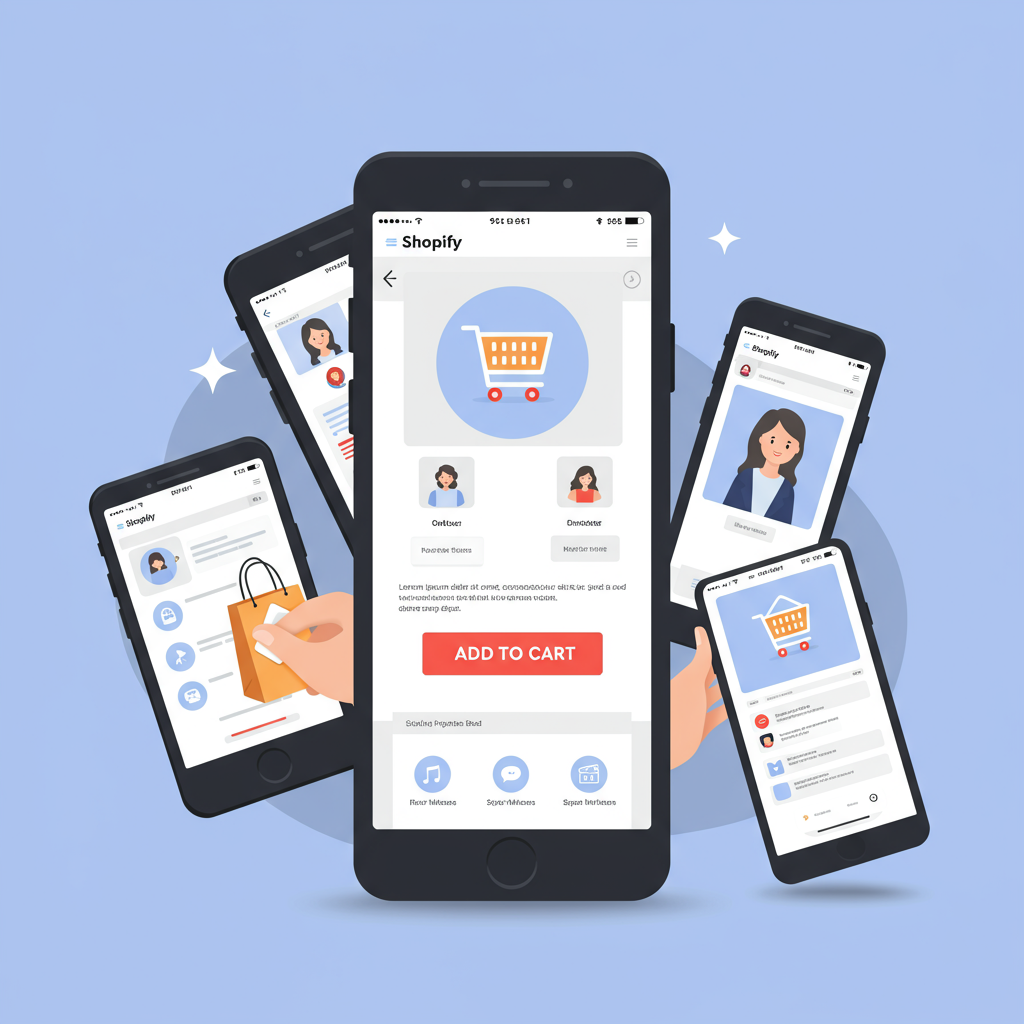Optimizing Your E-commerce Experience for Today’s Mobile Shoppers
Hello fellow Shopify merchants! Today, I want to talk about something incredibly crucial for your online store’s success: designing for mobile first.
In my experience, the shift towards mobile browsing isn’t just a trend; it’s the dominant way people interact with the internet, especially when shopping.
Think about it: how often do you find yourself browsing products or even making purchases directly from your smartphone? Probably quite often, right?
This is why I firmly believe that if your Shopify store isn’t optimized for mobile devices from the ground up, you’re leaving a significant amount of potential revenue on the table.
A mobile-first approach means we design the smallest screen experience first, then progressively enhance it for larger screens. It’s about prioritizing the core experience.
Why is this so important? Mobile users often have less patience, slower connections, and smaller screens. Every element must be intentional and efficient.
My first piece of advice is to choose a mobile-responsive Shopify theme. This is your foundation. Most modern Shopify themes are responsive, but some are better than others.
When I’m evaluating themes, I always check how they render on a phone. Does the navigation collapse neatly? Are product images clear? Is the ‘Add to Cart’ button easy to tap?
Next, let’s talk about speed. Mobile users hate slow loading times. I’ve seen countless studies showing that even a one-second delay can drastically increase bounce rates.
To combat this, I focus heavily on image optimization. Large, unoptimized images are often the biggest culprits for slow mobile load times.
I recommend using Shopify’s built-in image optimization or a third-party app that compresses images without sacrificing too much quality. WebP format is also something I look into.
Beyond images, consider minimizing the use of heavy scripts or unnecessary apps that might slow down your mobile site. Every millisecond counts.
Navigation is another critical area. On a mobile screen, complex menus are a nightmare. I strive for simplicity and clarity.
A clean, intuitive hamburger menu is usually the best approach. Ensure your most important categories are easily accessible within one or two taps.
Product pages are where the magic happens. For mobile, I make sure product images are high-resolution but optimized, and that they can be easily swiped through.
Product descriptions should be concise and scannable. Use bullet points and short paragraphs. Mobile users don’t want to scroll through walls of text.
The ‘Add to Cart’ button needs to be prominent, easy to tap, and ideally ‘sticky’ as the user scrolls, so it’s always visible.
What do you think about these strategies so far? Are you already implementing some of them, or are there new ideas sparking for your store?
The checkout process is perhaps the most critical part. Any friction here will lead to abandoned carts. I aim for as few steps as possible.
Enable accelerated checkouts like Shop Pay, Apple Pay, or Google Pay. These significantly reduce the effort required from mobile users.
Ensure form fields are large enough to tap, and that the keyboard automatically switches to numeric for phone numbers or credit card fields.
I also pay close attention to typography. Text needs to be legible on small screens. Choose clear fonts and ensure sufficient line height and letter spacing.
Don’t forget about touch targets. Buttons and links should be large enough for a finger to tap accurately without accidentally hitting something else.
Finally, testing is non-negotiable. I regularly test my Shopify store on various mobile devices – different screen sizes, operating systems, and browsers.
Use tools like Google’s Mobile-Friendly Test and PageSpeed Insights to identify areas for improvement. Your Shopify analytics will also show you mobile user behavior.
By embracing a mobile-first design philosophy, you’re not just making your store look good on phones; you’re creating a faster, more intuitive, and ultimately more profitable experience for all your customers.
It’s an investment that pays dividends in customer satisfaction, lower bounce rates, and increased conversions.
So, take the time to review your Shopify store through the lens of a mobile user. I promise you, the effort will be well worth it.
Let’s make our Shopify stores shine on every screen!






